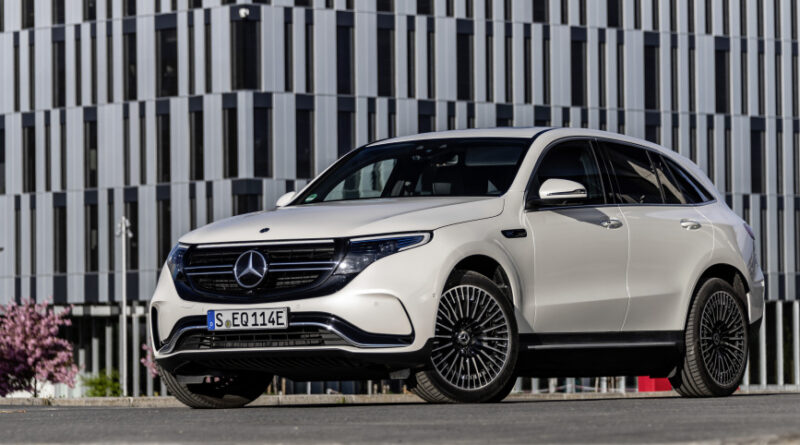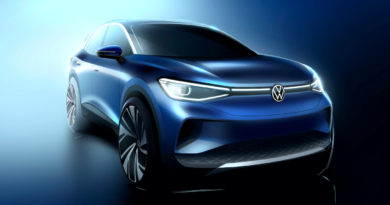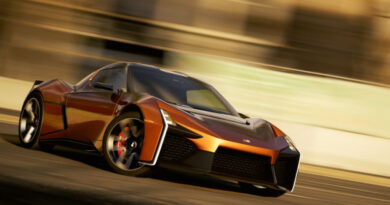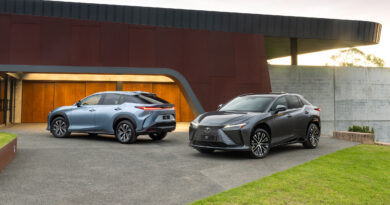2020 Mercedes-Benz EQC 400 review
The Mercedes-Benz EQC is the model that launched the German company’s new EV-only sub-brand in 2019. It’s around the same size as the internal-combustion powered GLC SUV. The pair share some suspension and body components and are built on the same assembly line in Bremen.
The more aerodynamic exterior style of the EQC contributes to its real-world driving range. There’s room for five inside, where driver and passengers will find both high-grade materials and high-tech systems. Acceleration is immediate, strong and near-silent.
Want the latest EV news and reviews delivered to your inbox? Subscribe to our weekly newsletter!
Mercedes-Benz knew it needed to make the EQC worthy of the famed three-pointed star. That the vehicle got a lot of engineer-love is obvious from the way it drives. It’s super quiet, with ride comfort to rival the brand’s big luxury limousines. In fact, the EQC outshines other SUVs in the Mercedes-Benz catalogue with its outstanding refinement.
Value
At $137,900, before on-road costs are added, the EQC 400 is expensive. That said, its price is similar to natural competitors. Top versions of the Jaguar I-Pace EV400 and Tesla Model X in fact cost a little more than the Mercedes-Benz. Worth noting, too, is that the delayed-again Audi E-tron is sure to be in the same area when it finally reaches Australia late in 2020.
Equipped standard with Mercedes-Benz’s most advanced active-safety, driver-assist and infotainment systems, the EQC comes with an array of technology in line with its high price.
It also comes with two charging cables, one for connecting with public AC chargers and another for occasional or emergency use that plugs into a normal domestic power socket. As a bonus, the EQC comes with a five-year subscription to the growing Chargefox network of public chargers.
The EQC is covered by a five-year/unlimited km warranty Mercedes-Benz calls an Owner Protection Plan. This scheme additionally covers the battery pack for eight years or 160,000km, whichever comes first.
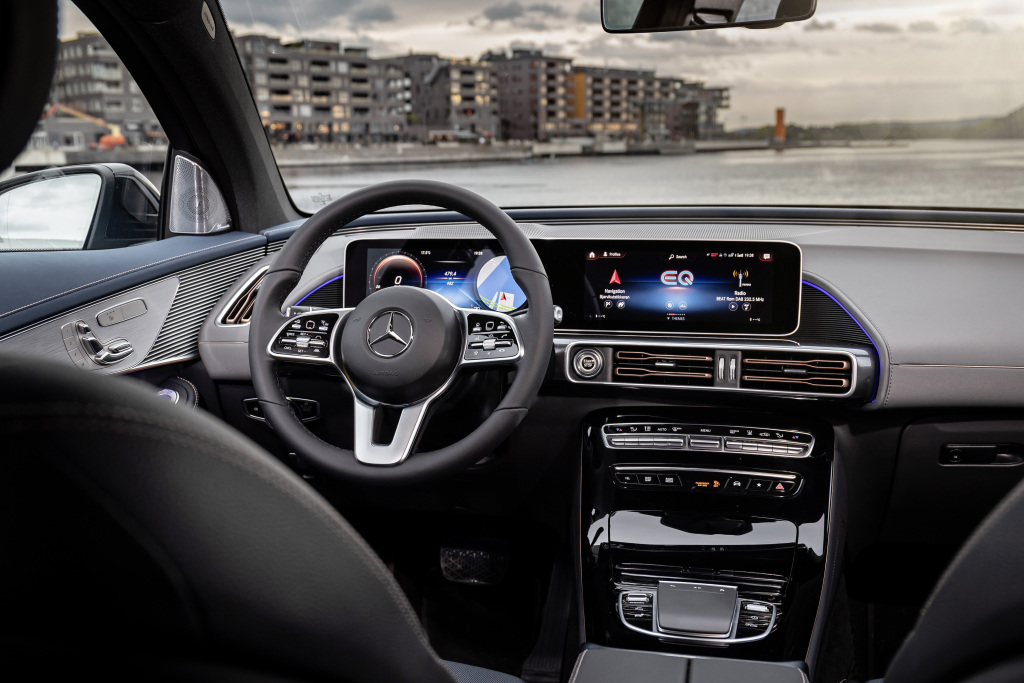
Inside
The EQC comes with Mercedes-Benz’s MBUX (Mercedes-Benz User eXperience) infotainment system. Its ultra-wide display is a treat to look at and easy to use. Moving through menus and making selections is simple, at least if you stick to using the touchscreen, the touchpad between the front seats or the steering wheel controls.
The other way to interact with MBUX is by using voice control technology. This system can be a bit hit-and-miss, despite Mercedes-Benz’s boast that it’s able to understand natural language.
Simply saying ‘Hey Mercedes’ is the way to wake the system, but often a casual mention of the brand name will activate it. And despite the much-hyped and AI-aided ability to cope with normal speech, it sometimes acts dumb.
Mercedes-Benz wants its EQ models to have a distinct identity. Though the steering wheel and minor switches like electric seat adjusters are familiar, the instrument panel of the EQC is different any of the company’s internal-combustion powered SUVs or cars. The clean and uncluttered look is very attractive.
The interior is spacious. Black leather is the standard seat covering, though alternatives are available. Rear-seat headroom is generous and the flat-floored cargo compartment is broad and long.
To sum up, the interior of the EQC is a very pleasant place to spend time.
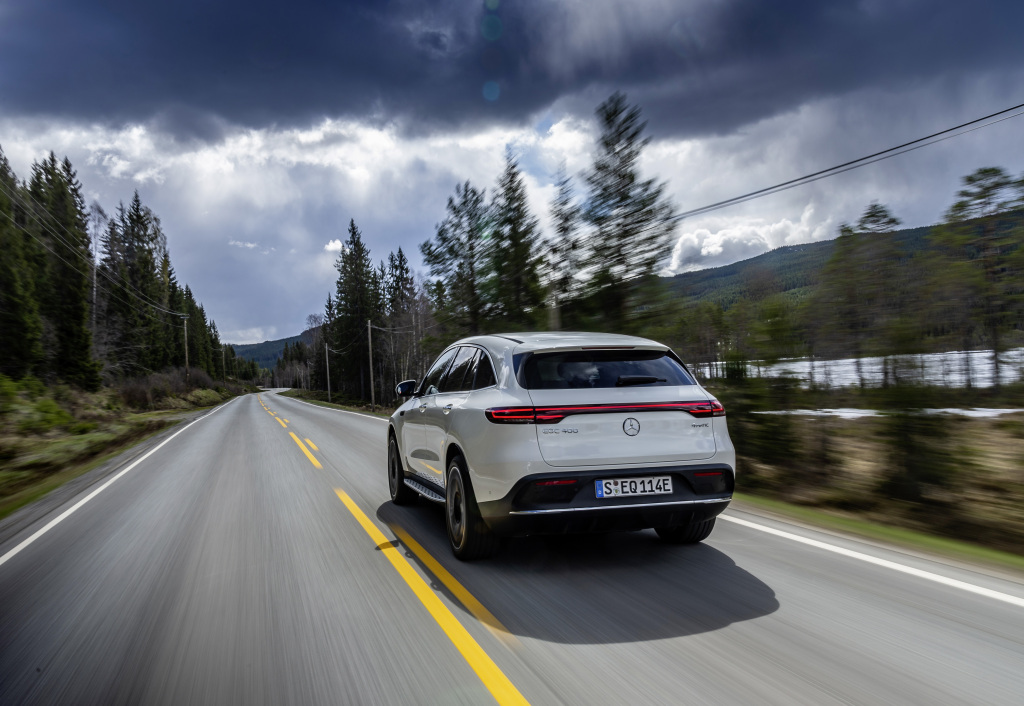
Performance and efficiency
Like other dual-motor EVs, the EQC accelerates like the proverbial cut cat. A 0-100km/h time of just 5.1 seconds is the claim, meaning it’s only a little slower than the company’s popular high-performance models powered by the Mercedes-AMG 4.0-litre twin-turbo V8.
What’s different is the character of the EQC’s performance. It’s awesome, yet undramatic. Even when the accelerator pedal is floored there’s negligible noise from the two 150kW motors, and not a peep from the tyres. This is one of the most perfectly polished EV drivetrains on the market.
In normal driving, expect energy consumption around 25kWh/100km. Adopt a more efficient driving style (accelerate gently, avoid unnecessary braking) and it’s possible to get below 20kWh/100km. The EQC’s official energy consumption figure is 21.4kWh/100km, similar to other EVs that are also SUVs.
The 80kWh capacity of the Mercedes-Benz’s battery pack is therefore good for a no-worries driving range of at least 300km. Light-footed drivers should be able to drive closer to 400km before needing to recharge. The official driving range, calculated using the WLTP cycle, is 417km.
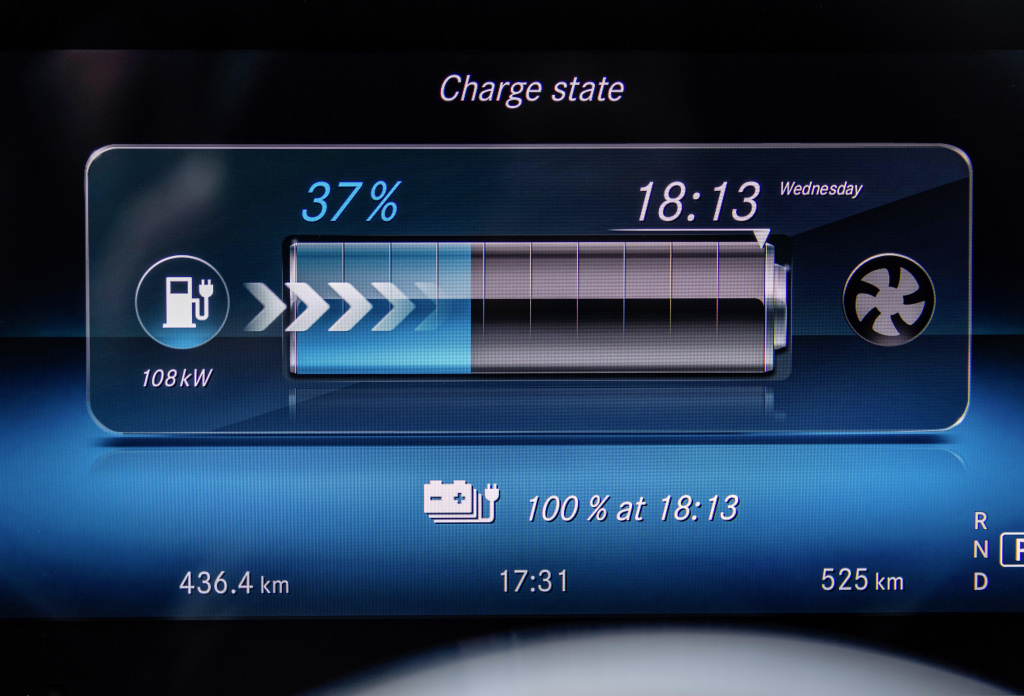
Charging
With its 7.4kW maximum, the EQC’s on-board AC charger means the time needed to for a full 0-100 percent recharge is more than 12 hours when attached to a Mercedes-Benz wallbox. This shouldn’t present any problem in day-to-day use, where it’s unlikely the battery pack will be totally drained.
But the 7.4kW restriction means there’s little point hooking up to powerful 22kW public AC chargers. Unless, of course, there’s no other option available.
On the other hand, the EQC is well set up to take advantage of public DC chargers. The Mercedes-Benz’s battery pack can accept up to 110kW, meaning speedy recharging at the growing number of public 150kW DC fast chargers.
Using one of these, adding 100km of driving range can take only 10 minutes or so, according to Mercedes-Benz. As usual, the actual charge rate depends on factors like the battery pack’s state of charge and temperature, as well as the ambient temperature.
The EQC has the usual Euro combination of Type 2 AC and CCS DC charge ports.
The vehicle’s EV specific sat-nav helps deal with range anxiety. It’s very accurate at predicting remaining driving range, and it makes finding charging points very easy.
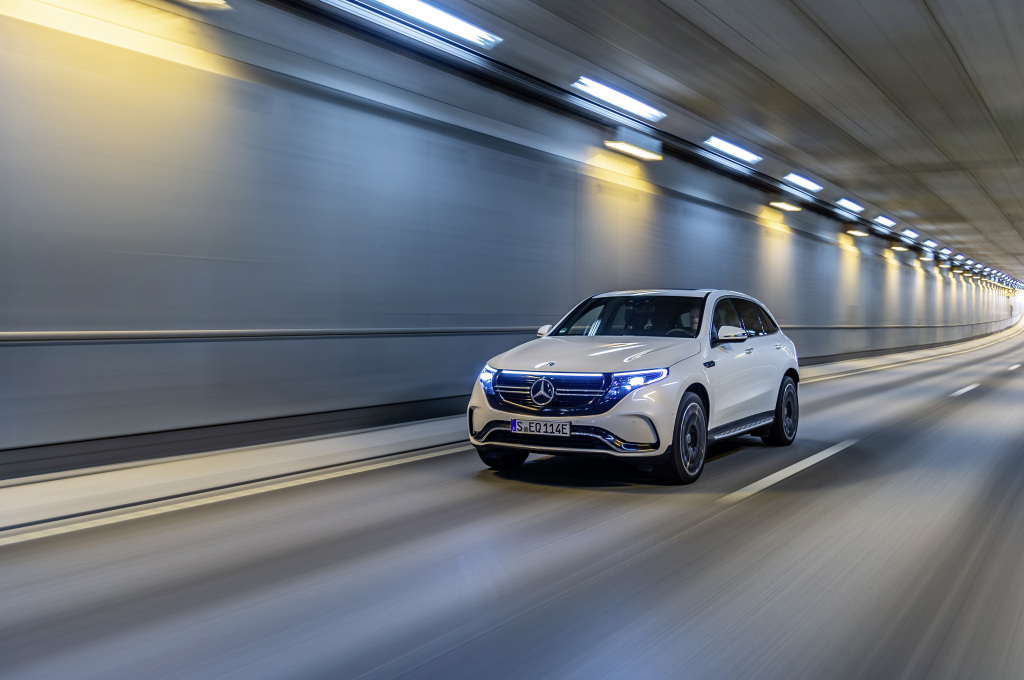
Ride and handling
Drive the EQC and it’s immediately obvious that Mercedes-Benz’s engineers decided to prioritise comfort over agility. The ride is so smooth that it almost seems the hefty EQC (it weighs well over two tonnes) is steamrollering the road flat as it goes.
Equally impressive is the silence. Contrary to popular belief, electric motors are not inherently silent, and Mercedes-Benz engineers who worked on the EQC say they invested a lot of time and effort in making it so quiet.
As mentioned earlier, acceleration is outstanding. The swift, strong surge is seamless. Like the majority of EVs, there’s no gearshifting. The EQC’s motors drives through fixed, single-ratio gears.
With a motor driving each axle, the EQC is all-wheel drive. The software controlling the delivery of torque is classy. There’s never a hint of wheelspin, even when accelerating hard.
The degree of regenerative braking effect when the accelerator pedal is released is adjustable. All the driver has to do is tap the steering wheel paddles to cycle through the four levels. In D Plus the EQC glides like a normal car, while D Double Minus slows the big Mercedes significantly.
While the way it accelerates is sports-car speedy, but the EQC doesn’t do sports-car style handling. It’s not comfortable being hurried through corners, and there’s little sense of connection with the road through the steering wheel.
Safety
Mercedes-Benz is at the pointy end of the car-making pack when it comes to safety. The EQC is equipped with an up-to-date array of the company’s most advanced active-safety and driver-assist systems. Including, naturally, autonomous emergency braking
While worth having, such technology cannot always prevent a crash. The EQC comes with nine airbags, and a 2019 five-star rating from ANCAP, Australia’s independent crash test organisation.

Verdict
The serene driving character of the EQC is alluring and engaging. It’s a very easy EV to like. And it just happens to be an SUV, which is what most Australians currently prefer to drive.
It has the driving range to meet the needs of most drivers, most days. The classy and spacious interior is well made and lavishly equipped.
The EQC will tempt at least some well-to-do buyers to make the big switch.
Mercedes-Benz EQC 400
Price: $137,900
Basics: EV, 5 seats, 5 doors, SUV, all-wheel drive
Range: 417km
Battery capacity: 80kWh
Battery warranty: 8 years/160,000km
Energy consumption: 21.4kWh/100km
Motors: 1 front 150kW/380Nm and 1 rear 150kW/380Nm
AC charging: 7.4kW, Type 2 plug
DC charging: 110kW, CCS plug
0-100km/h: 5.1 seconds

